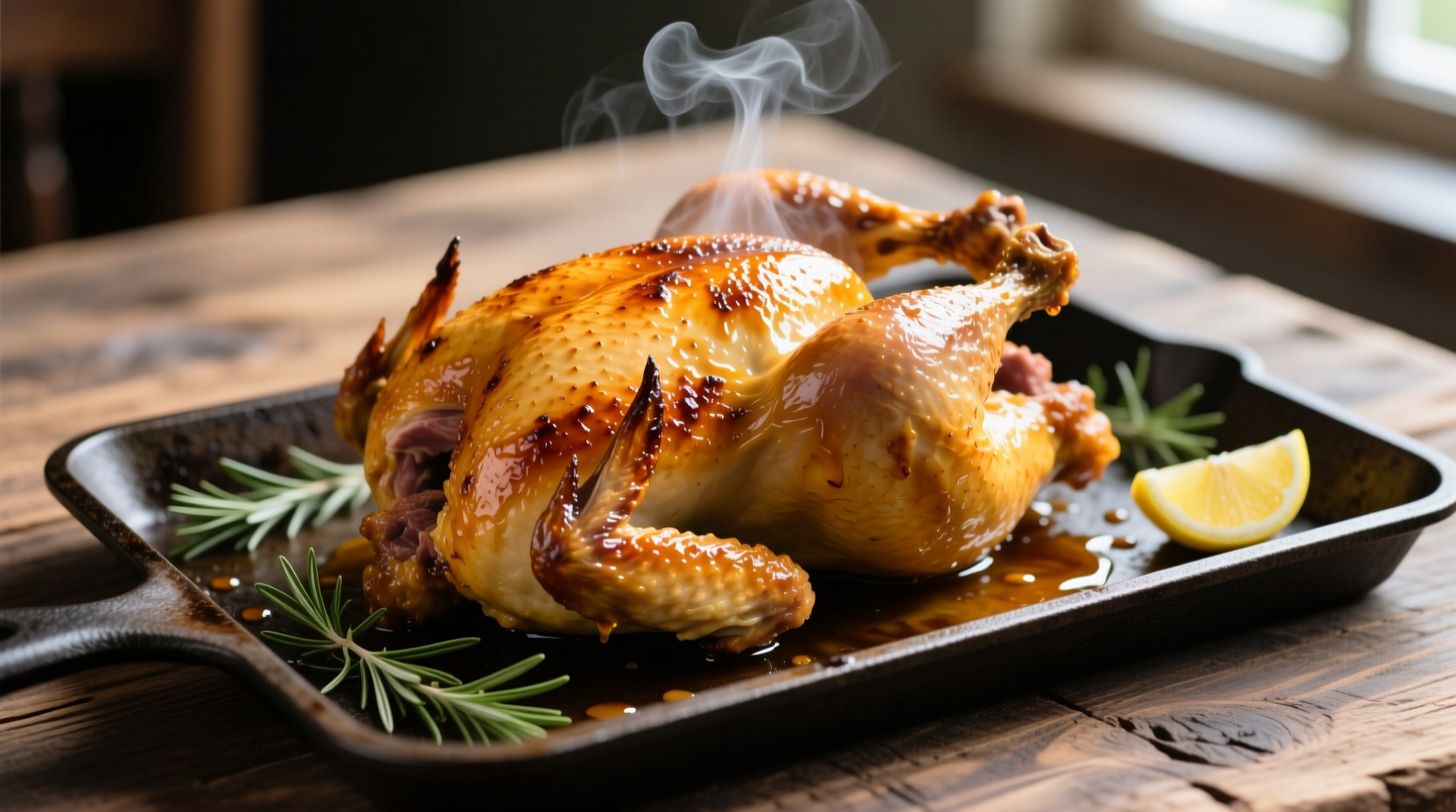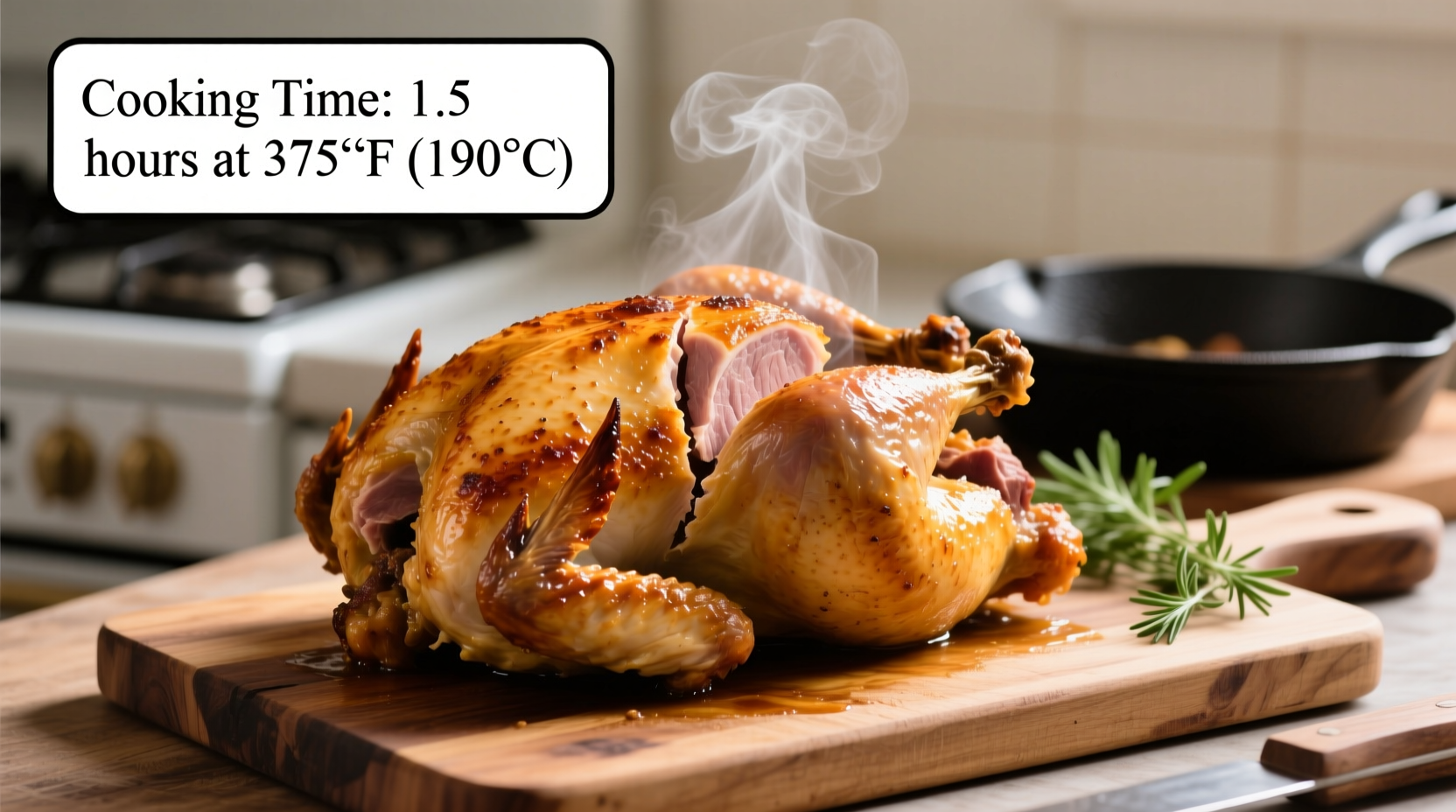Getting chicken cooking times right transforms your meals from dry disappointments to juicy perfection. Whether you're preparing a Sunday roast or weeknight dinner, understanding the precise timing for different cooking methods ensures food safety while maximizing flavor and texture. This comprehensive guide delivers exact timing specifications backed by culinary science and food safety standards.
Why Chicken Cooking Time Matters More Than You Think
Undercooked chicken poses serious food safety risks, while overcooked chicken becomes dry and unappetizing. The USDA Food Safety and Inspection Service confirms that poultry must reach 165°F (74°C) internal temperature to eliminate harmful bacteria like salmonella and campylobacter. But achieving this temperature requires understanding multiple variables that affect cooking time.
Key Factors That Determine Chicken Cooking Duration
Your chicken's final texture depends on these critical elements:
- Weight and size - Larger birds need proportionally more time
- Cooking method - Roasting differs significantly from grilling or air frying
- Starting temperature - Room-temperature chicken cooks more evenly than refrigerated
- Oven accuracy - Many home ovens have temperature variations of ±25°F
- Thermometer placement - Incorrect placement gives false readings
Complete Cooking Time Guide by Method
Roasting a Whole Chicken
The classic method delivers exceptional flavor and crispy skin. Follow this foolproof formula:
- Preheat oven to 375°F (190°C)
- Calculate time: 20 minutes per pound + 15-20 minutes
- Example: 4-pound chicken = 80 minutes + 20 minutes = 100 minutes total
- Always verify with thermometer: 165°F (74°C) in thigh
Baking Chicken Pieces
For bone-in, skin-on pieces at 400°F (204°C):
- Thighs and drumsticks: 35-45 minutes
- Wings: 25-35 minutes
- Breasts: 20-30 minutes (watch carefully to prevent drying)
Grilling Chicken
Direct heat requires careful monitoring:
- Bone-in pieces: 30-40 minutes over medium heat (350-400°F)
- Boneless breasts: 6-8 minutes per side
- Always use indirect heat for final cooking to prevent burning
| Cooking Method | Temperature | Time per Pound | Internal Temp Required |
|---|---|---|---|
| Conventional Roasting | 375°F (190°C) | 20 min + 15-20 min | 165°F (74°C) |
| Convection Roasting | 325°F (163°C) | 15 min + 10-15 min | 165°F (74°C) |
| Slow Cooking | Low: 200°F (93°C) | 4-5 hours | 165°F (74°C) |
| Air Frying | 375°F (190°C) | N/A (pieces only) | 165°F (74°C) |
Essential Food Safety Timeline
Understanding this critical timeline prevents foodborne illness:
- 0-40°F (-18 to 4°C): Safe storage temperature range
- 40-140°F (4-60°C): Danger zone where bacteria multiply rapidly
- 140-165°F (60-74°C): Transition zone where bacteria begin dying
- 165°F+ (74°C+): Temperature where harmful bacteria are eliminated
The USDA Food Safety and Inspection Service emphasizes that chicken must reach 165°F internally regardless of cooking method. This temperature destroys pathogens instantly, making your chicken safe to eat.

Professional Chef's Timing Secrets
Seasoned cooks rely on these proven techniques to achieve perfect results every time:
- Resting is non-negotiable - Let chicken rest 10-15 minutes after cooking; temperature rises 5-10°F during this time
- Thermometer placement matters - Insert into thickest part of thigh without touching bone
- Visual cues complement thermometers - Juices should run clear, not pink
- Size adjustments - Reduce time by 25% for convection ovens
Avoid These Common Timing Mistakes
Even experienced cooks sometimes fall into these traps:
- Guessing instead of measuring internal temperature
- Not accounting for carryover cooking during resting
- Opening the oven door too frequently (causes 25°F temperature drop)
- Starting with cold chicken straight from the refrigerator
- Ignoring oven hot spots that cause uneven cooking
When Timing Rules Don't Apply
Certain situations require special considerations:
- Stuffed chickens need additional 15-20 minutes cooking time
- Frozen chicken requires 50% more cooking time
- High-altitude cooking (above 3,000 feet) needs extended time
- Older birds (stewing hens) require significantly longer cooking
Perfect Chicken Every Time: Step-by-Step Process
Follow this professional sequence for foolproof results:
- Bring chicken to room temperature (30-60 minutes)
- Preheat oven to specified temperature
- Season and prepare chicken
- Calculate estimated cooking time based on weight
- Insert oven-safe thermometer if possible
- Check temperature 15 minutes before expected finish time
- Remove when thermometer reads 155-160°F (68-71°C)
- Rest 10-15 minutes (temperature will rise to 165°F)
How to Verify Doneness Without a Thermometer
While a thermometer is essential for food safety, these secondary indicators help:
- Juices run clear when thigh is pierced
- Legs move freely in their joints
- Meat is no longer pink near bones
- Skin is golden brown and crisp
Remember that color alone isn't a reliable indicator—undercooked chicken can appear white while still unsafe.
Storage Guidelines for Cooked Chicken
Proper storage prevents food waste and illness:
- Refrigerate within 2 hours of cooking (1 hour if above 90°F/32°C)
- Store in airtight containers for 3-4 days
- Freeze for up to 4 months
- Reheat to 165°F (74°C) internal temperature
Frequently Asked Questions
How long to cook a 5-pound chicken at 375°F?
A 5-pound chicken requires approximately 115-120 minutes at 375°F (190°C). Calculate 20 minutes per pound (100 minutes) plus 15-20 minutes additional time. Always verify with a thermometer that the internal temperature reaches 165°F (74°C) in the thickest part of the thigh.
Should I cook chicken covered or uncovered?
Cook chicken uncovered for most of the time to achieve crispy skin. Cover with foil only during the last 30 minutes if the skin is browning too quickly. Covering throughout cooking traps steam, preventing proper browning and potentially extending cooking time.
How do I know when chicken is done without a thermometer?
While a thermometer is essential for food safety, secondary indicators include clear juices when pierced, legs moving freely in joints, and no pink meat near bones. However, these methods aren't reliable—undercooked chicken can appear done. The USDA recommends always using a food thermometer to verify 165°F (74°C) internal temperature.
Why does my chicken cook faster than the recommended time?
Several factors can accelerate cooking: oven running hotter than indicated, convection setting enabled, starting with room-temperature chicken, or using dark cookware that absorbs more heat. Always rely on internal temperature (165°F/74°C) rather than time alone to determine doneness.
How long should chicken rest after cooking?
Chicken should rest 10-15 minutes after cooking. This allows juices to redistribute throughout the meat and the temperature to rise 5-10°F, reaching the safe 165°F (74°C) threshold. Resting time counts toward total cooking time—remove chicken from heat when thermometer reads 155-160°F (68-71°C).











 浙公网安备
33010002000092号
浙公网安备
33010002000092号 浙B2-20120091-4
浙B2-20120091-4